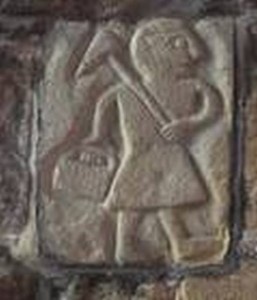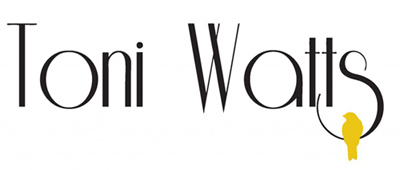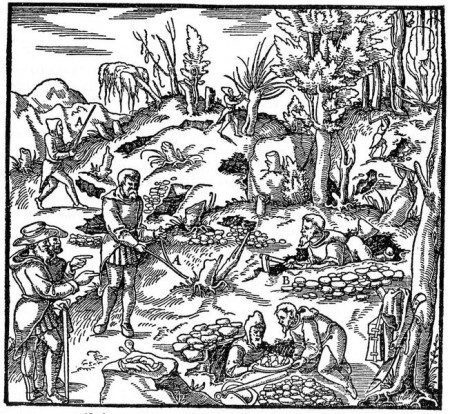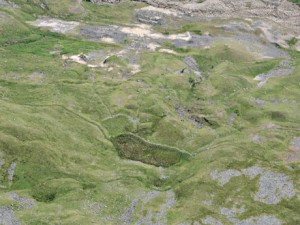As I stood in the ruins of Furness Abbey, I wondered…what was the roof made of, when this building was in its prime in the twelfth century? Our village church has a lead covered roof, but it is substantially smaller. And if they did use lead in medieval Cumbria, where did it come from? So I thought I’d see what I could find out about medieval lead mining.
Well, lead mines did indeed exist in Cumbria (and also in Derbyshire, Yorkshire and Shropshire), with most of the metal obtained being used for religious buildings – for both roofing and stained glass windows – and making coffins. The dissolution of the monasteries in the 1530s, when lead was stripped from churches, apparently led to a noticeable decrease in lead mining – the age-old story of supply and demand.
The lead ore was originally dug out of shallow trenches, with deeper, vertical shafts being a later invention. To turn the ore from something dug out of the ground to a weather resistant sheet for a roof initially involved separation of the heavier lead-containing rocks from the lighter ones containing zinc. The heavy rocks were broken up and then heated. This heating, in simple terms, caused a chemical reaction, changing the mined lead sulphide to lead oxide, with a final reduction to the elemental metal.
This heating was done in smelters. The earliest ones were simple structures of stone slabs sited on westward facing slopes, drawing their oxygen supply from the prevailing winds. As you might imagine, they were pretty inefficient. They were superseded by small charcoal fired bellows-blown furnaces.

Our first picture of a medieval lead miner carrying a basket and a pick, found in Wirksworth Church in Derbyshire. Photo: http://www.bigginhall.co.uk.
Lead sheets were made by pouring molten lead on a bed of sand (a method which, according to Canterbury City Council, is still in use today – another one of my ‘well I didn’t know that’ moments.
After this little bit of research, I thought I’d see what I could find out about Furness Abbey itself and, lo and behold, I found an article which said: ‘Furness Abbey was heavily involved in iron and lead mining’. I suppose for an institution of such power, the ability to obtain lead for construction work was vital, but it was good to have my original question answered definitively!
Thanks to Adam Robert Lucas for his information on Furness Abbey in Industrial Milling in the Ancient and Medieval Worlds: A Survey of the Evidence for an Industrial Revolution in Medieval Europe.
Lead had another important use – the production of paint.
More on that another time.


